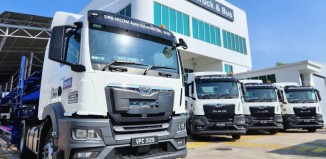The World’s Most Famous Car Mascot
Romantic fantasies and whisperings surround the history of the world’s most instantly recognised motor car mascot, wistfully described by its creator, the sculptor Charles Sykes, as “A graceful little goddess, the Spirit of Ecstasy, who has selected road travel as her supreme delight and alighted on the prow of a Rolls-Royce motor car to revel in the freshness of the air and the musical sound of her fluttering draperies.”
The very first Rolls-Royce motorcars did not feature radiator mascots but by 1910, the company was concerned to note that some owners were affixing “inappropriate” ornaments. Claude Johnson, then managing director of Rolls-Royce Motor Cars, was asked to see to the commissioning of something more suitably dignified and graceful.
He turned to Charles Sykes, a young artist friend and a graduate of London’s famous Royal College of Art. As it happened, Sykes had already presented to Lord Montagu of Beaulieu (father of the present baron) a personal mascot for his Rolls-Royce Silver Ghost. It was coyly called ‘The Whisperer’, and had been modelled on the graceful shape of Eleanor Thornton, secretary to his Lordship and said to also be his mistress(only to be whispered).
Sykes’ brief from Claude Johnson had been to evoke something of the spirit of the mythical beauty, Nike, whose graceful image was to be admired in The Louvre, but Sykes was not so impressed. He felt that a more feminine representation might be apt. Almost certainly, it was again Miss Thornton whom he had in mind. Certainly, The Spirit of Speed, as he named his first sculpture, has an uncanny resemblance to The Whisperer.
It was Claude Johnson who devised the more felicitous description of The Spirit of Ecstasy, although in the United States the mascot is called ‘The Flying Lady’. Either way, she was cast in bronze, a figure some 178 mm high, and went into production in 1911.
Today’s Spirit of Ecstasy stands at 75 mm and, for safety, she is mounted on a spring-loaded mechanism designed to retract instantly into the radiator shell if struck from any direction.
It is a misconception that the mascots are made from solid silver. Over the years, several different metals have been used, but never silver. In the early days, white metal was used to fashion the shape. Nowadays it is highly polished stainless steel.
























